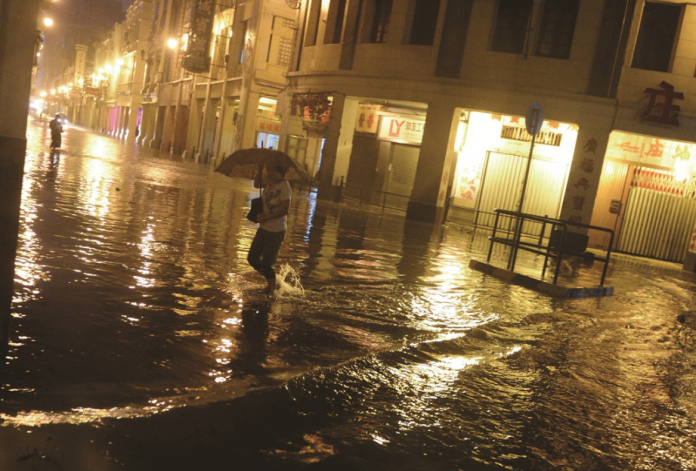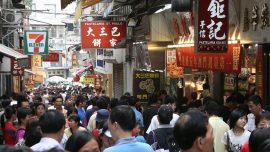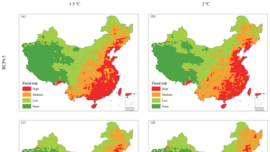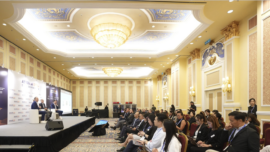In a scenario where sea waters rise by one metre, the majority of the Macau Peninsula will become a maximum risk zone
Macau Business | July 2024 | Special Report | How climate change(s) Macau
A study by the Institute of Atmospheric Physics, Chinese Academy of Sciences, Beijing, published in 2021, put an end to doubts. Other scientists had previously drawn attention to the problem of sea level rise (SLR) in Macau, but researchers from the Institute of Atmospheric Physics stated that “global warming-related SLR constitutes a substantial threat to Macau, due to its low elevation, small size.”
Based on local tide gauge records, this study shows that sea level in Macau “is now rising at an accelerated rate”: 1.35 mm yr-1 over 1925-2010 and jumping to 4.2 mm yr-1 over 1970-2010, “reflecting an apparent acceleration of SLR.”
Furthermore, reads the document, the sea level near Macau rose 10 per cent faster than the global mean during the period from 1993 to 2012.
“In the future, as projected by a suite of climate models, the rate of SLR in Macau will be about 20 per cent higher than the global average,” states the scientific team led by Lin Wang.
From then on, other scientists began to worry about other types of priorities: if such scenarios (which the previous study quantified in detail) are confirmed, which areas of Macau will be most affected?

In the last two years, at least two different studies have come to answer the question.
“At the current sea level, the western part of Macau Peninsula is more sensitive to storm surge. The west and northwest of Macau Peninsula is mainly affected by overtopping floods, while the eastern part of Macau Peninsula is mainly affected by backflow through the pipe network,” states a research conducted by Zhi-Yong Long and Liang Gao, State Key Laboratory of Internet of Things for Smart City and Ocean Science and Technology, University of Macau.
According to them, “the western and northwestern parts are the most storm surge-prone region on Macau Peninsula, owning to its inshore location and low-lying terrain. Even in the storm surge scenario corresponding to a 5-year return period, floods appear in this region.”
“When facing a 200-year return period storm surge event, the flow depth will reach more than 1 metre in the western and northwestern areas of Macau Peninsula,” Long and Gao added.
Also from the University of Macau is the researcher Shi Huabin, who has dedicated himself to the topic of SLR and who promises soon the conclusions of a study in which “attempts to quantify the risk of flooding caused by storm tides based on a specific case, [super-typhoon] Hato.”
The investigation established five risk levels based on the potential duration of flooding, something Shi described as “very important.” “If the floods last one or two days, the result is more dangerous,” he said.
In a scenario where sea waters rise by one metre, Shi said the model predicts that the majority of the Macau Peninsula will become a maximum risk zone, as well as “huge flooding at the airport and Cotai.”.
“The areas most affected by flooding are concentrated along the western coastline of the Macau Peninsula” – study
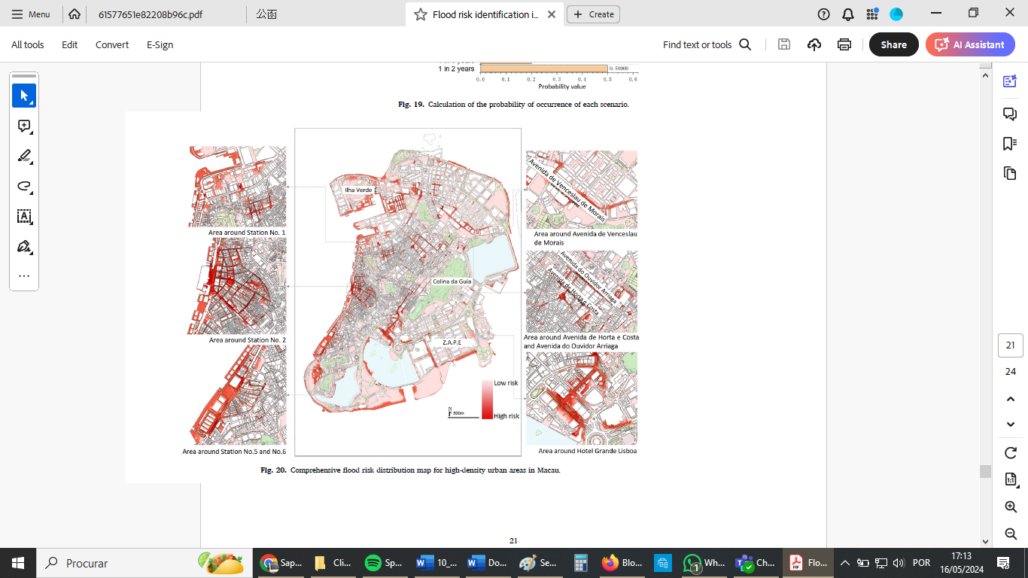
The Shijiaoju floodgate
In September 2023, Hong Kong recorded the highest rainfall for the last 139 years.
To make the problem worse, the authorities in Shenzhen had to open the reservoir’s floodgates, but the Hong Kong police were only informed 45 minutes beforehand, and public opinion in the region knew only a quarter of an hour before, which made the response difficult.
This case alerted public opinion in Macau to the possibility of a similar situation occurring in the event of a discharge of water from the Shijiaoju (Zhuhai) floodgate.
When questioned by lawmaker Leong Hong Sai, the Government simply responded that “work has already begun to reconstruct the Shijiaoju floodgate” and that its operation “has not, in general, caused any impact on the tide level in Macau in recent years, however , the Macau Government remains attentive to relevant circumstances.”




